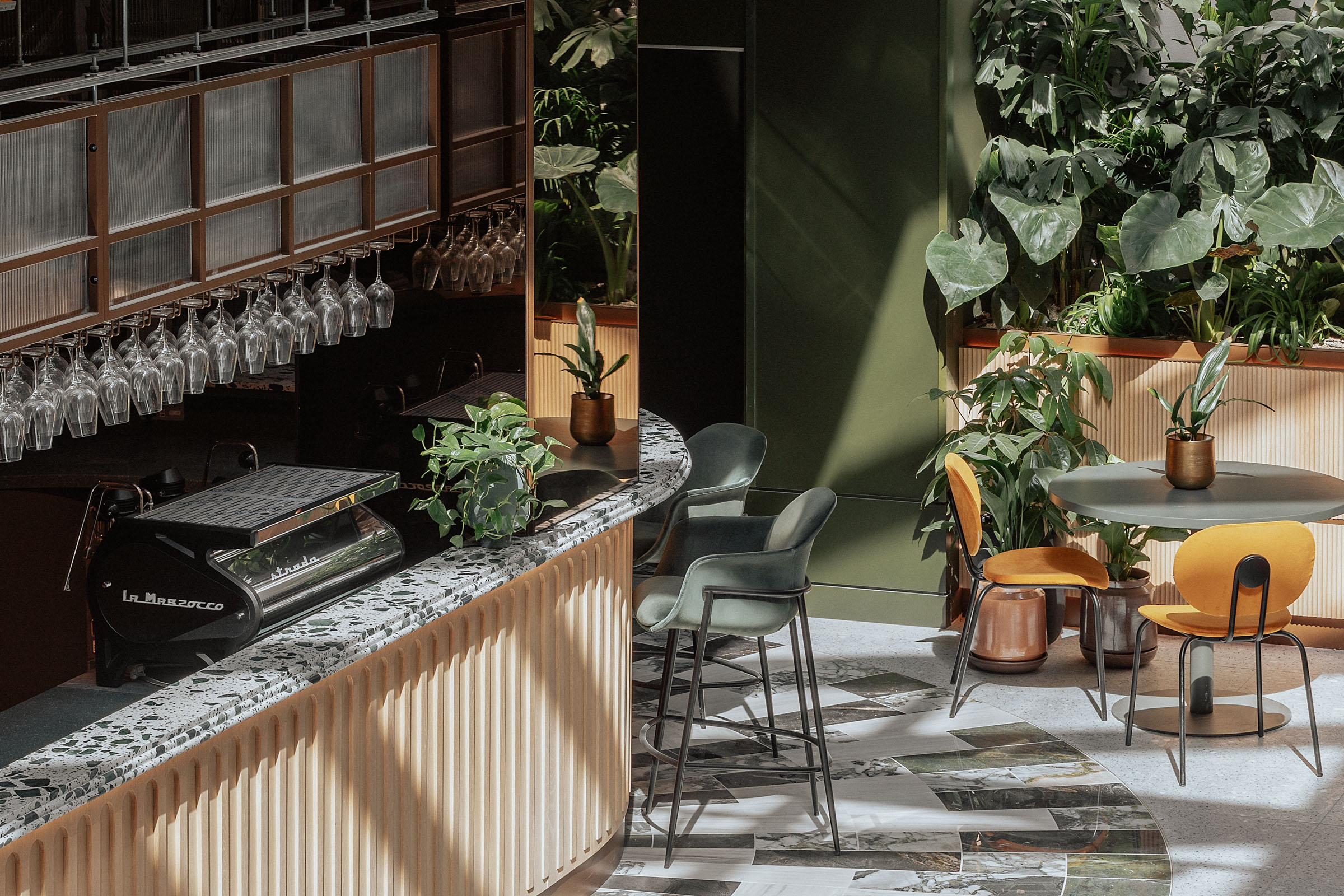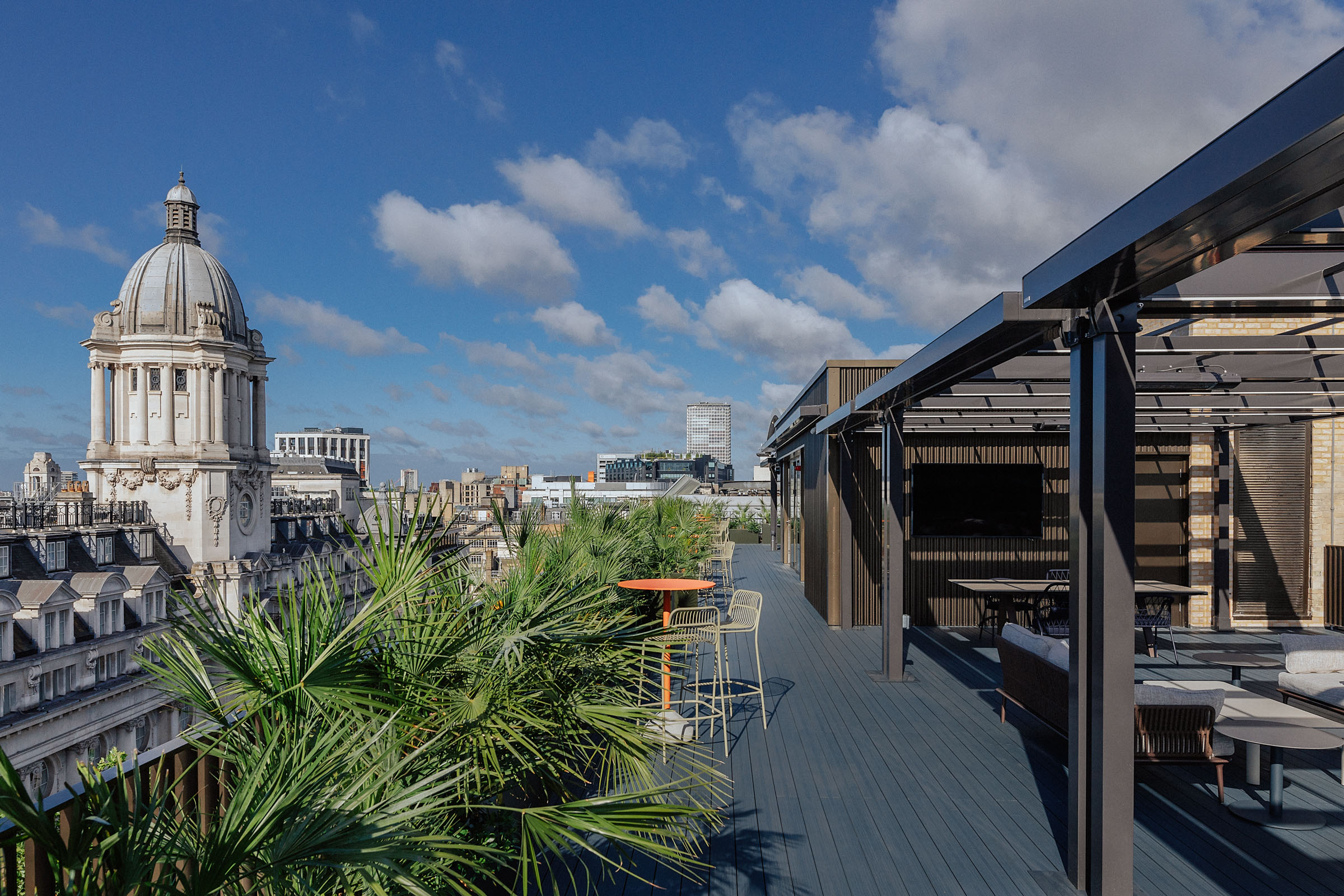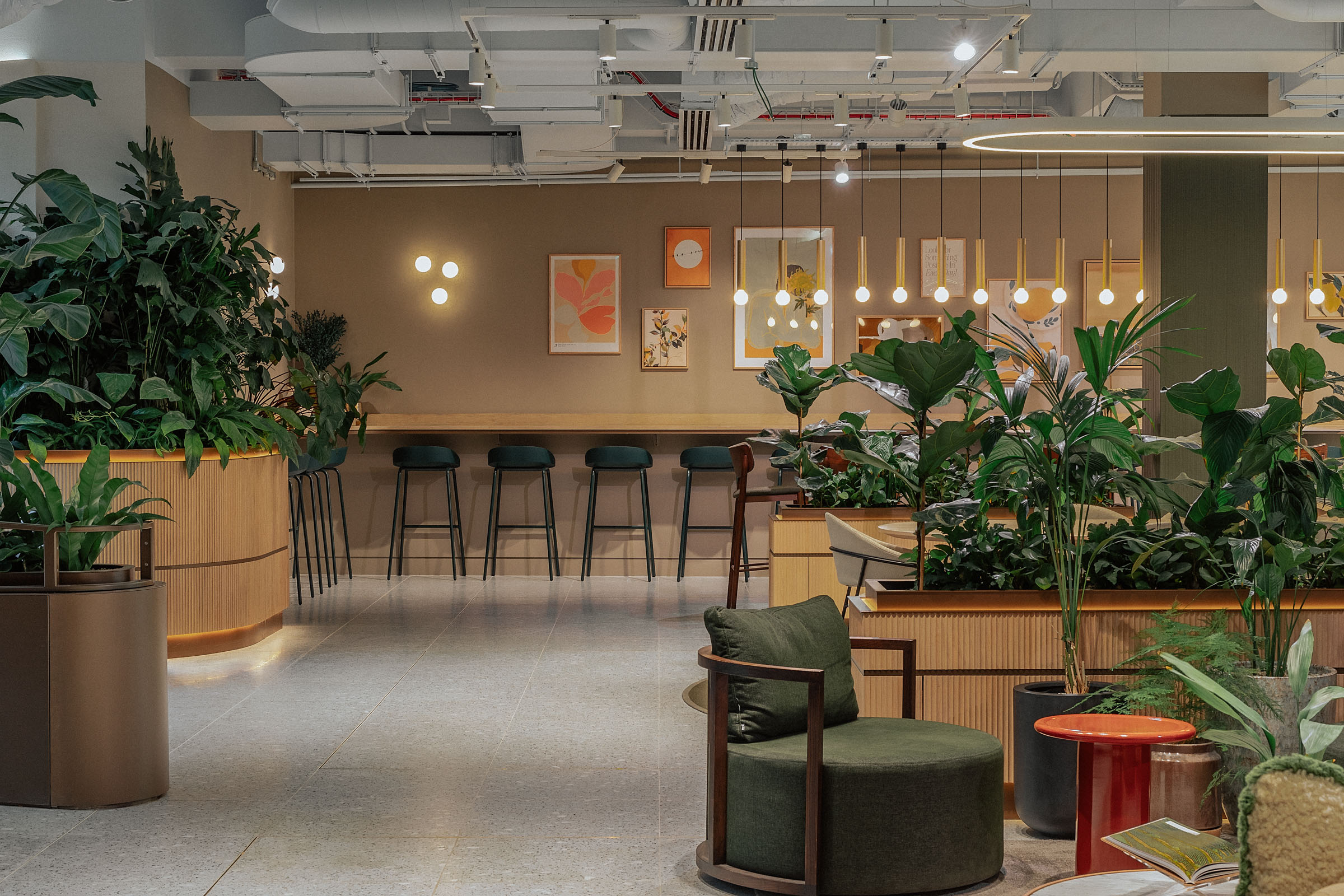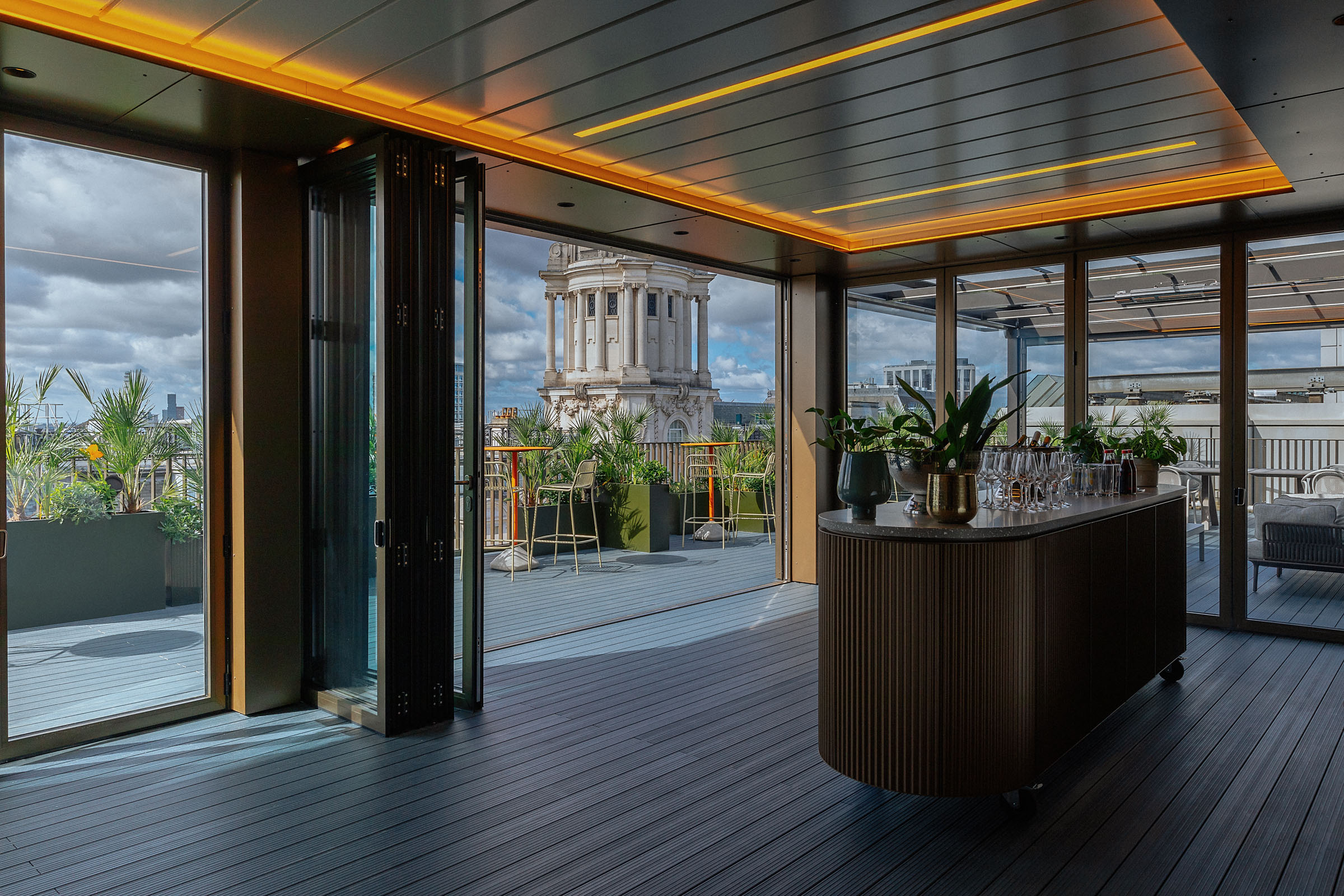Choosing the right coworking setup in London is a big decision. Whether you are a startup, a growing team or an established HQ planning your next chapter. This guide cuts through the noise with practical advice, area-by-area tips, and insider detail from our work with tech companies that needed more than a pretty postcode. You will learn how to weigh a day pass against a membership, when a private office beats a hot desk, which boroughs suit your team’s rhythm, and what to check before you book a tour. Expect clear guidance, real examples, and a focus on creating the perfect workspace for team collaboration and growth.
What Is Coworking And Why Choose A Coworking Space?
Coworking brings people and companies together in flexible workspace that is beautifully designed, service led, and ready to use. The model suits freelancers who want structure without a long lease, startups that value agility, and larger teams testing new markets or responding to hiring plans. London’s flexible market has grown fast, and central London now sees roughly a tenth of stock run as flexible, up from single digits pre-2019, a sign that demand has matured as firms blend home, office, and third spaces.
Flexible workspace is popular because the lease terms are short, the fit out is done, and the amenities are curated. You get cleaning services, secure wi-fi and reliable high-speed connectivity, often with phone booths, breakout zones and on-site support. Our clients tell us they value the consistency of service alongside the ability to scale up or roll down as headcount changes, a theme echoed across London as operators focus on occupancy and quality over raw expansion.

How Do Day Pass And Membership Options Compare?
A day pass is a simple way to test areas or add capacity, popular when project teams come together or when travel plans bring you across the city. Platforms run credits based systems where coworking passes, meeting rooms and day offices are bookable on short notice, which keeps costs aligned with usage and supports hybrid policies.
Membership suits companies that want guaranteed desks and predictable access, often bundled with lockers, bike storage, and a set number of hours in a meeting room. London offers both rolling memberships and longer commitments, so solutions flex as you adjust to new projects, seasonal peaks or hiring plans. Many operators layer in event calendars and networking opportunities, which adds value for recruiting, sales and culture.
Where Is The Best Workspace Near Liverpool Street And Shoreditch?
Teams that work around liverpool street often want fast transport links, quick food runs and a mix of quiet corners and buzz. Spitalfields Market, Old Street and Barbican are nearby, which means choice on cafés, gyms and evening meetups. Shoreditch attracts design, media and product teams, and the area is handy for tech meetups, client coffees and investor drop-ins.
Areas east of London Bridge balance character buildings with contemporary services, and you will find coworking close to overground lines as well as the Elizabeth line. A stop further brings you to Farringdon and Leather Lane for great coffee and lunch options, ideal when you want a quick walk between calls. Found helped PPL’s leadership team understand these contrasts by touring different formats across Central London, which gave them clarity on managed, serviced and leasehold options before they chose Landmark at 99 Bishopsgate.
What Makes Holborn And High Holborn Great For Teams?
Holborn is a sweet spot between the City and the West End, which helps when your client list spans finance, media and legal. Buildings here tend to be professional without feeling stiff, and you can duck into a bookable meeting room two minutes from the Tube. High Holborn adds larger floorplates and better chances of finding a quiet wing for engineering, sales pods or a boutique project studio that needs privacy.
Companies choose this pocket for reliable transport links and for the mix of heritage and contemporary space. Amenities like on-site cafés, wellness rooms and strong front-of-house services can lift attendance, a point we highlighted to Omaze when comparing provider offers for their senior team. That conversation shaped a brief that aligned amenities with behaviour, then we secured a short term solution while their permanent space completed.
Is A Private Office Better Than A Hot Desk Or Dedicated Desk?
A private office works when you need confidentiality, brand presence and focus. Sales or leadership huddles, hiring interviews and quiet analysis all benefit from a door and your own layout. Teams that love movement across functions often pair a private office with access to shared lounges, which keeps collaboration high while giving a core base for materials and kit.
Hot desking and a dedicated desk suit different rhythms. A hot desk is perfect when your team is truly hybrid, while a dedicated desk gives certainty for engineers, designers and analysts who prefer a fixed spot. Many operators blend seat types inside shared office space, which is handy as your team grows or contracts and you would rather avoid a complete move. London’s market has seen a notable shift toward managed and tailored models, as clients graduate from a shared office toward a bespoke package without taking on a complex lease.

Can You Host A Meeting Room Or Event Space In A Boutique Setting?
Yes, and it is simpler than you might think. A well run coworking space will offer a meeting room with robust AV, private phone options and on-site support, often alongside a light-filled event space for team days or client launches. Check for natural light, airflow, and whether your guests can find the entrance without friction.
Look for service depth. A reliable provider will keep tech humming, refresh rooms between bookings, and help with sign-in, catering and wayfinding. Ask about bike storage, gym access, and whether cleaning services extend to after hours events. The best spaces bring warmth through greenery, curated art and layout, which helps the day feel special without fuss.
Which Boroughs Suit Different Teams, From Southwark To Clerkenwell?
Different teams lean into different rhythms. Southwark gives quick access to the river and cultural spots, and it is popular with agencies that bounce between clients and shoots. Clerkenwell is loved by design and architecture firms, with showrooms and makers nearby. Borough, north of London Bridge, is great for food-led days and client entertaining, and the area’s history adds character to your brand story.
Farringdon, Barbican and Old Street line up for firms that want edge and energy without sacrificing professional tone. Many buildings here are warehouse conversions, so you get volume, character and space that can carry your brand. Enquiries for flexible office space rose through 2024 as more companies tested flex for project cycles and headcount changes, and that trend continued as operators focused on quality and occupancy.
How Do West London And Fulham Compare To Kensington And Hammersmith?
West London has a calmer feel, and Fulham suits teams that want residential convenience and river walks after work. Kensington adds prestige, museums and executive-friendly settings for board sessions. Hammersmith offers strong transport options and value for money, which helps when you need quick access to Heathrow or clients around the west end.
These areas attract companies that entertain clients in smarter settings, and that want quieter streets near parks for midday breaks. You will still find plenty of choice on food, gyms and cafés, with operators that deliver consistent service and community. Across the board, demand for quality flexible office space remains strong even as operators tighten their portfolios, which heightens the importance of shortlists, touring and comparing the details.
What About Highbury And Islington, Camden, Hackney And London Fields?
Highbury and islington are great for creative teams who live nearby and cycle to work. Camden brings music heritage and independent food, and it works for brands that favour culture over corporate gloss. Hackney and london fields serve product, content and fashion teams that value neighbourhood energy, weekend markets and studios. You will also find a growing mix of workspaces in London around these spots, with operators focusing on hospitality, artful interiors and calm acoustics.
Look out for details that lift the space. Check for secure wi-fi and strong wifi for guests, soundproofed phone booths, and whether the operator maintains quiet zones during busy afternoons. Buildings here often give you light, character and a more relaxed pace, which can help with focus as well as recruiting. London offers variety at every budget, so a good brief will tie location, commute and culture to your hiring plan and client mix.

How Found The Space Helps You Choose Coworking Space In London
Found was created to make office decisions uncomplicated, efficient and enjoyable, and our process is built around your goals. With Flo, the world’s leading period tracking app, the wish list included more than 100 desks, multiple collaborative areas and eight phone booths, all set within a bright, characterful space that could be fitted to their brand. We focused on a category A canvas, then shaped the specification with leadership and stakeholders, which saved time and money while delivering a statement office that felt like their own.
Speed matters for some briefs. Lenus came to us with three weeks to move, and we secured a ready to go space with 130 desks, three meeting rooms and seven phone booths, followed by international expansion support across nine countries. That result came from clear strategy, transport analysis and deep market access, and it shows how a blended plan can move quickly without cutting corners.
Growth brings different questions. Omaze needed a framework for understanding how amenities influence attendance, so we built comparison decks that linked wellness rooms, cafés and tech enablement to real usage. That insight shaped their brief, then our relationships unlocked an interim space at no extra cost while their permanent home completed. The project underlines how a partner can think through behaviour, productivity and culture, not just square footage.
Education changes outcomes. PPL’s leadership team were unsure about formats beyond the traditional corporate model. We ran tours across London, from managed to serviced to fitted leasehold options, which clarified the trade offs. The final call, Landmark at 99 Bishopsgate, gave presence, privacy and ease without the operational overhead of a full lease.
Practical Area Notes And On-The-Ground Tips
Central Postcodes For Clients And Commute. Central London pockets such as holborn, high holborn and farringdon keep you within easy reach of clients, partners and investors. Check for Elizabeth line access and walk times to stations, then weigh commute time for your team. Many providers around these areas offer a calm base during the day and easy access to evening events in the west end.
City Fringe For Creative Energy. Shoreditch, Clerkenwell and Old Street draw design, product and media teams. The fabric of the buildings helps, from brick and steel to light and volume. Ask about natural light, acoustic treatment, and whether the floorplate supports zones for deep work, stand-ups and casual chats. You will often find event space tucked behind reception for showcases and demo days.
South And East For Scale And Value. Southwark and Borough deliver character, food and culture close to the river. Longer east london runs bring you toward emerging hubs where you may find larger footprints and value, which suits companies building toward a future move to a managed or leased solution. Many teams start with flexible coworking and then graduate to managed floors as hiring settles.
West For Executive Calm And Clients. Kensington, Hammersmith and Fulham fit teams that want calmer streets, parks and executive dining. Clients appreciate tidy lobbies and quiet meeting rooms, and you are well placed for Heathrow runs and west of city client clusters. The shift to premium, amenity rich flexible models continues to draw enterprise demand across these submarkets.
How To Plan Your Next Move, Step By Step
Set The Brief. Start with team rhythm, not square footage. Who needs quiet work versus buzz, who hosts clients weekly, and what does a great day look like. Flag your must haves such as a dedicated desk for engineering leads or a hot desk pod for sales. Decide whether you need a private office from day one or whether you can start in a shared office.
Choose Your Locations. Shortlist two or three micro-areas based on clients and commute, then schedule back-to-back tours. Include locations in london that represent different vibes, for example liverpool street, Shoreditch and Clerkenwell on one day, or Holborn, Farringdon and the West End on another. Keep notes on crowd levels, acoustics and local food options.
Compare The Details. Look beyond the headline photos. Ask about secure wi-fi, visitor management, AV support, and whether event space is included. Confirm the small but important things, from postal handling to weekend access. If you are planning client pitches or internal gatherings, check whether the provider can support an elevated setup without fuss.
Decide On Contract Shape. Flexible office contracts can be rolling or fixed, with credits for extras like meeting rooms, printing or day offices. If your team mostly sits near Barbican and Old Street but leadership hosts clients in Holborn, you might blend memberships with a day pass for those cross-town days. The right blend keeps your budget aligned with real usage and your team happy.
Why The Market Is Moving, And What That Means For You
Demand for flexible options rose through 2024 and into 2025 as companies balanced hybrid policies with the need for professional, branded space. Reports show enquiries trending up versus pre-pandemic levels, and London remains a headline market despite near term challenges. Occupiers want quality, service and choice, and landlords are responding with fitted, managed products that reduce hassle for tenants.
Operator strategies have shifted toward occupancy and experience, which means better service levels, smarter building tech and hospitality-grade teams. A supply gap persists in some submarkets, especially for premium floors that combine character with great transport, which is why a structured search and early conversations matter. The prize is a space that fits culture, budget and growth, without the drag of complex build and long commitments.
Book A Tour
Ready to see what is possible across london and beyond. Speak to us to refine your brief, compare formats and book a tour. If you only need one day next week, you can also book a coworking option while we line up full tours and proposals.
Local Highlights You May Want To Try
A quick round-up of places people ask about when they tour with us.
- Shoreditch: Good for design and product teams, quick access to Old Street and tech meetups.
- Holborn And High Holborn: Balanced for legal, media and finance, simple for cross-town travel.
- Farringdon And Leather Lane: Coffee, food and after-work options, easy to host partners.
- Kensington And Hammersmith: Executive friendly pockets with parks, galleries and strong links west.
- Southwark And Borough: Character buildings and food culture close to the river, handy for London Bridge.
- Highbury, Islington, Camden, Hackney, London Fields: Neighbourhood feel, great for creative teams and photo or content runs.
The Most Important Things To Remember
- Choose areas based on clients, commute and culture, not just a pretty lobby.
- Match contract type to rhythm: day pass for spikes, membership for certainty.
- Decide whether a private office, a hot desk or a dedicated desk best fits how your team works.
- Check the detail: connectivity, phone booths, bike storage, and whether rooms are genuinely bookable when you need them.
- Look for amenity depth and service, from gym access to good front-of-house, then test the tech.
- Shortlist two or three micro-areas and tour them back to back, then compare calmly.
- Ask for data on attendance drivers, amenities like wellness features and cafés can lift usage.
- Remember that demand is strong for quality flexible workspace, so plan ahead for premium floors.
- Use real examples: the right brief and partner can reduce risk and speed up decisions.
- Speak to a broker for a clear, confident path to office space in london that supports brand, people and growth.
FAQ's
Finding the perfect office space requires expert guidance from office brokers who have exclusive access to a wide range of London office spaces. Office brokers can save you time and stress by assisting throughout your entire search journey, helping you navigate options based on your business needs, desired location, and budget.
An office broker can simplify the search process by leveraging their market expertise, negotiating better lease terms, and securing the best office space that matches your company’s needs.
WeWork has established a significant presence with their coworking office spaces across major cities, providing professionals and businesses the flexibility to work seamlessly from various locations.






.avif)


























.avif)



















































.avif)












.avif)


.avif)

.avif)

.avif)
.avif)
.avif)
.avif)


.avif)


.avif)
.avif)
.avif)

.avif)

.webp)


